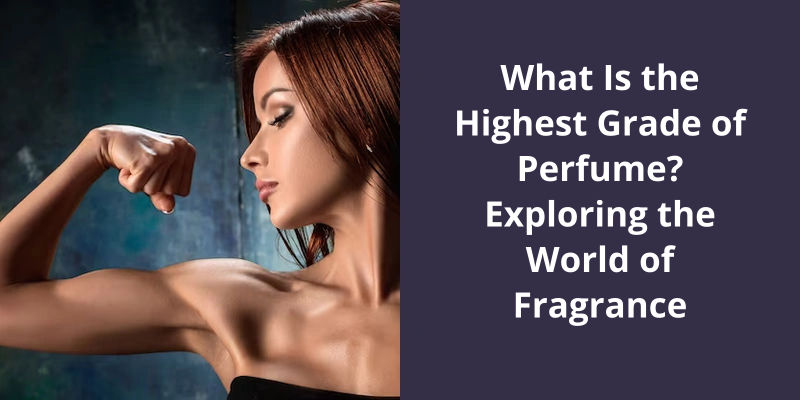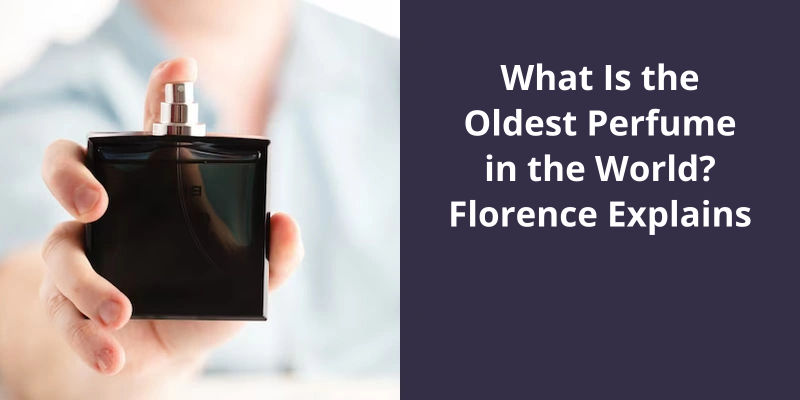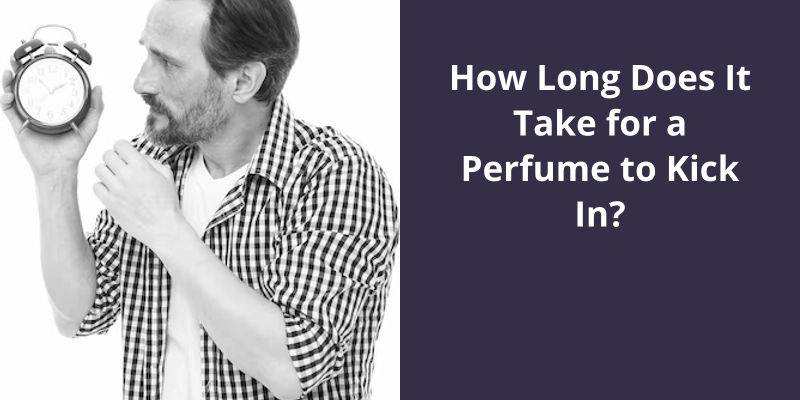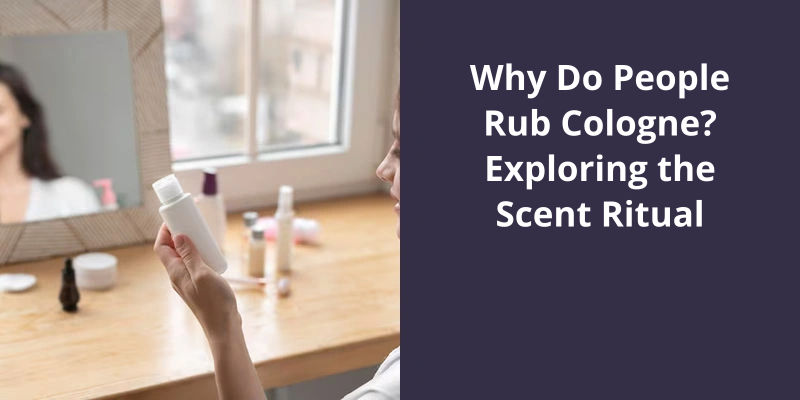The highest grade of perfume is considered to be Parfum, also known as “extrait de parfum” or perfume extract. This form has the highest concentration of fragrance, usually ranging between 20% to 40%, making it the most potent and longest lasting. Due to its high concentration, Parfum is usually more expensive than other types of fragrances. It is applied sparingly and directly to the pulse points, releasing its scent throughout the day. Despite its potency, the high concentration of essence tends to make Parfum smoother and less likely to be overwhelming, offering a rich and deep scent.

What Does Grade 2 Perfume Mean?
Grade 2 perfume refers to a type of fragrance that typically consists of aromatic compounds and fine fragrant oil extracts. These compounds and extracts are diluted in water and/or high-grade alcohol. The use of alcohol in these perfumes allows for a quicker evaporation of the fragrance, which may result in the scent wearing off sooner if only a small amount is applied.
It’s worth noting that the grade of a perfume doesn’t necessarily determine it’s overall quality. Different grades cater to various preferences, needs, and budgets. Grade 2 perfumes may be a suitable choice for casual occasions or for individuals who prefer a more subtle, easily wearable scent.
While they may not be as long-lasting as higher grades, these perfumes still offer enjoyable fragrances and are a more affordable option for those seeking a subtle and easily wearable scent. The choice of fragrance grade ultimately depends on personal preference and desired longevity.
In addition to the exquisite ingredients used, high quality perfumes are also meticulously crafted by skilled perfumers who understand the art of scent composition. These artisans carefully balance the notes, ensuring that each fragrance evolves beautifully over time and leaves a lasting impression on the wearer. Furthermore, quality perfumes are packaged in elegant and durable bottles, adding to the overall experience of luxury and sophistication.
What Does Quality Mean for Perfume?
What does quality mean for perfume? A high-quality perfume is one that’s made with top-quality raw materials, has a pleasant and long-lasting scent, and is made with great attention to detail. High-quality perfumes are often made with rare or expensive ingredients, such as essential oils or natural extracts. These superior materials contribute to a more refined and sophisticated fragrance, elevating the overall experience for the wearer.
One of the key aspects of a high-quality perfume is the careful crafting of it’s scent. Perfume artisans spend countless hours experimenting with different combinations of ingredients to achieve the perfect balance of notes, resulting in a harmonious olfactory experience. They meticulously select aromatic substances that blend seamlessly together, ensuring that each scent element enhances the others and creates a memorable fragrance that lingers on the skin.
The History of Perfume and How Quality Has Evolved Over Time
The history of perfume dates back thousands of years, with it’s origins rooted in ancient civilizations such as Egypt, Mesopotamia, and India. Initially, perfumes were made using natural ingredients like flowers, herbs, and spices. However, the quality of perfume has evolved significantly over time.
In the 19th century, advancements in chemistry revolutionized the perfume industry. Synthetic compounds were introduced, allowing perfumers to create a wider range of scents. These synthetic ingredients provided a more consistent quality and increased the longevity of fragrances.
Today, the highest grade of perfume is referred to as “parfum” or “extrait de parfum.” These fragrances contain the highest concentration of aromatic compounds, typically between 20-30%, resulting in a more intense and long-lasting scent. Parfum is considered the most luxurious and expensive category of perfumes.
Besides parfum, other grades of perfume include eau de parfum (EDP), eau de toilette (EDT), and eau de cologne (EDC). These contain lower concentrations of aromatic compounds, making them lighter and less long-lasting compared to parfum.
The quality of perfumes is also influenced by the skill and expertise of perfumers, the choice of ingredients, and the production techniques. Perfume houses and niche brands continue to push the boundaries of creativity and craftsmanship to offer diverse and exceptional fragrances to perfume enthusiasts around the world.
Watch this video on YouTube:
When it comes to perfume, pure perfume is considered the best in terms of concentration. With a high percentage of perfume oil, typically between 15 and 30 percent, it ensures a potent, long-lasting scent. Not to mention, the sillage of pure perfumes creates a noticeable fragrance trail that surrounds you throughout the day.
What Is the Best Level of Perfume?
Perfume lovers and enthusiasts often find themselves delving into the world of fragrances, searching for the highest grade and concentration of perfume available. Within this pursuit, one encounters the concept of pure perfume, which holds the title of being the highest level of perfume. Pure perfume, also known as parfum or extrait de parfum, contains a concentration of fragrance oils that typically ranges between 15 and 30 percent. This high concentration is what sets pure perfumes apart, allowing them to create potent and long-lasting scents.
One of the most remarkable aspects of pure perfume is it’s sillage, the extent to which the fragrance lingers in the air around the wearer. Their intense concentration ensures that the fragrance extends far beyond the body, leaving a trail of scent in it’s wake. This not only adds to the allure and luxuriousness of the perfume but also makes a lasting impression on those who encounter it.
Due to the higher concentration of perfume oil, pure perfumes possess an enhanced longevity compared to other fragrance concentrations. When applied in the morning, a pure perfume can effortlessly last throughout the day, maintaining it’s signature scent for hours on end. This enduring quality eliminates the need for frequent reapplication, making it an excellent choice for individuals seeking a fragrance that can effortlessly accompany them from morning till night.
The higher concentration of fragrance oils ensures that the wearer experiences the full depth, complexity, and nuances of the perfume’s notes. Every facet of the fragrance is accentuated, creating a multisensory experience that can be both captivating and deeply personal.
When it comes to exploring the world of fragrance, the allure of pure perfumes lies not only in their high concentration and sillage but also in the exceptional quality they bring. The exquisite materials used in their formulation are often of premium grade, carefully selected to ensure a luxurious olfactory experience.
Popular Fragrances Available in Pure Perfume Form
- J’adore by Dior
- Coco Mademoiselle by Chanel
- Black Orchid by Tom Ford
- Flowerbomb by Viktor & Rolf
- La Vie Est Belle by Lancôme
- N°5 by Chanel
- Good Girl by Carolina Herrera
- Alien by Thierry Mugler
- Shalimar by Guerlain
- Opium by Yves Saint Laurent
In the world of perfume, the term “Class A” is often used to describe fragrances that bear a striking resemblance to their high-end counterparts. These scents, though not the real deal, offer a surprisingly accurate imitation at a much more affordable price. While the label may raise eyebrows due to it’s association with counterfeit products, class A perfumes have gained popularity for their ability to capture the essence of luxurious fragrances without breaking the bank.
What Is Class a Perfume?
What’s class A perfume? Fragrances that are labeled as “Class A” are realistic imitations of an authentic, original item. These perfumes are essentially fancy counterfeits, commonly used for fashion, beauty, and tech products, usually from higher-end brands.
Ultimately, the highest grade of perfume is the authentic, original product crafted by renowned brands that have established themselves in the fragrance industry. These perfumes undergo meticulous formulation, using high-quality ingredients and skilled perfumers to create unique and complex scents. The artistry behind these fragrances, as well as their reputation for excellence, make them the pinnacle of perfumery.
The experience of wearing an original fragrance extends beyond the scent itself; it carries the prestige, history, and artistry of the brand.
These innovative fragrances take on a different form, known as hard perfume. Unlike traditional liquid perfumes, solid perfumes, cream perfumes, or solid colognes are transformed into a solid state. This alternative application method offers a unique experience while maintaining the essence of the scent.
What Is Hard Perfume Called?
What’s hard perfume called? Solid perfumes, cream perfumes or solid colognes are perfumes in a solid state rather than the liquid mix of alcohol and water or fragrance and carrier oil used in a typical perfume application, regardless of their concentration. These formats of perfume have gained popularity in recent years due to their convenience and portability. Solid perfumes are often sold in small, compact containers, making them perfect for on-the-go touch-ups or traveling. They’re also known for their longer-lasting scent, as the wax or oil base of the perfume helps to hold the fragrance on the skin for an extended period.
Solid perfumes are typically created by combining various aromatic ingredients, such as essential oils, resins, and waxes, to form a solid, balm-like consistency. The absence of alcohol in these formulas makes them gentle on the skin and suitable for individuals with sensitivities or allergies. Additionally, solid perfumes are versatile in their application, as they can be easily dabbed onto pulse points or massaged into the skin for a subtler fragrance. They can also be used to moisturize and nourish the skin due to the emollient properties of the ingredients used.
Cream perfumes, on the other hand, have a slightly different texture compared to solid perfumes. They contain a higher percentage of moisturizing ingredients, such as shea butter or cocoa butter, giving them a creamier consistency. Cream perfumes are often housed in small jars and can be applied with fingers or a brush.
They provide a convenient and mess-free way to apply fragrance, and many solid colognes come in compact, travel-friendly packaging. Like other solid fragrances, they’re long-lasting and can be reapplied as needed throughout the day.
These perfumes are created using different formulations, such as a wax or oil base, to achieve a solid or creamy texture. They’re particularly preferred by those who appreciate simplicity in their perfume application or have sensitivities to alcohol-based fragrances. Whether it’s the ease of a solid perfume or the creamy luxury of a cream perfume, these alternative options provide a unique and personal way to experience and enjoy the world of fragrance.
Benefits of Hard Perfume: Explore the Advantages of Using Solid Perfumes, Such as Their Convenience, Portability, and Long-Lasting Scent.
- Convenience: Hard perfumes offer a convenient alternative to traditional liquid fragrances. Their solid form makes them easy to carry and apply throughout the day.
- Portability: Solid perfumes are compact and lightweight, making them ideal for on-the-go use. You can easily take them with you while traveling or keep them in your purse or pocket for quick touch-ups.
- Long-lasting scent: Hard perfumes are known for their long-lasting fragrance. The solid formula helps the scent adhere to the skin, providing a lasting and subtle aroma throughout the day.
Manufacturers Grade fragrance oil is a step up in quality and can be used in various applications such as soap making, personal care products, and home fragrance products. On the other hand, Premium Grade fragrance oil is the highest quality and is often used in high-end perfumes and luxury products. Each grade of fragrance oil has specific guidelines and limitations to ensure consumer safety and regulatory compliance.
What Is Fragrance Grade?
Manufacturers Grade fragrance oil is a step above Burning Grade, and is commonly used in various products such as soaps, lotions, and candles. It’s considered suitable for most fragrance applications. Lastly, Premium Grade fragrance oil is the highest quality and is typically used in high-end perfumes and colognes. These oils undergo rigorous testing and meet the highest industry standards.
The grading of fragrance oils is determined by several factors, including the ingredients used, the manufacturing process, and the overall quality of the final product.
In addition to the grading system, the International Fragrance Association (IFRA) also sets guidelines for the safe use of fragrances. These guidelines ensure that fragrances are used responsibly and don’t pose any health or safety risks. It’s important for manufacturers and consumers alike to be aware of these guidelines and adhere to them when using or selling fragrance products.
These oils are crafted with the utmost care and attention to detail, resulting in a superior scent experience.
How Fragrance Oils Are Tested for Quality and Safety
- Quality and safety testing of fragrance oils is an essential process.
- Fragrance oils undergo rigorous testing to ensure they meet industry standards.
- One important test is the purity evaluation to determine the presence of any impurities.
- Sensory analysis is conducted to assess the fragrance’s aroma and overall quality.
- Chemical composition analysis helps identify potential allergens or harmful substances.
- Stability testing measures the fragrance oil’s ability to withstand different conditions.
- Microbiological testing ensures the absence of harmful bacteria or pathogens.
- Toxicology assessments examine the potential risks associated with the fragrance oil.
- Environmental impact evaluations analyze the oil’s effects on ecosystems.
- All these tests collectively ensure the quality and safety of fragrance oils.
Conclusion
In conclusion, when exploring the world of fragrance, it’s important to understand the different concentrations of perfumes. This category boasts the highest fragrance concentration, resulting in a more intense and long-lasting scent. On the other hand, eau de parum, eau de toilette, eau de cologne, and eau fraiche are categorized with lower concentrations of fragrance. By understanding these classifications, individuals can make informed choices about the strength and longevity of their desired fragrance.





